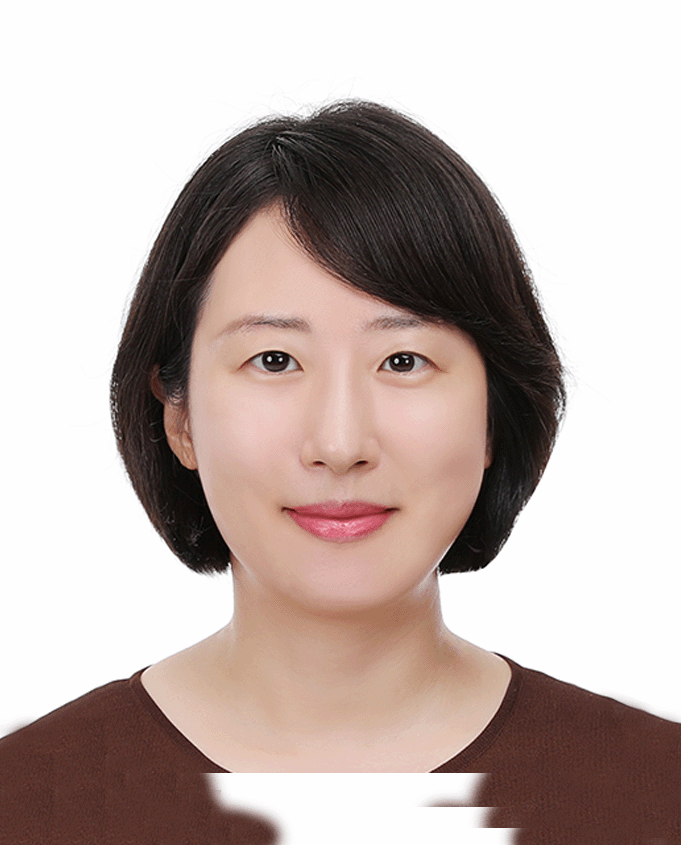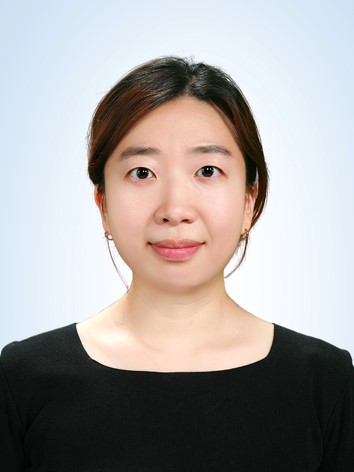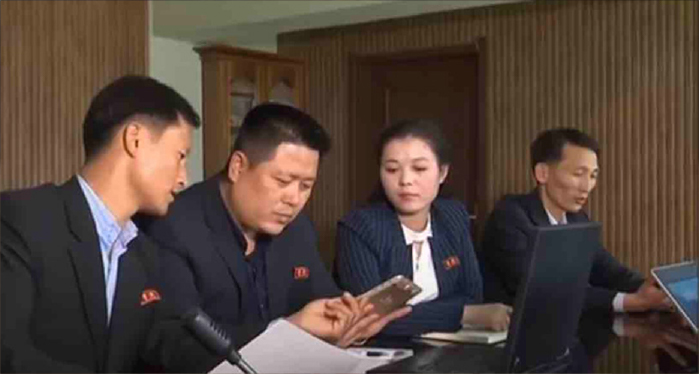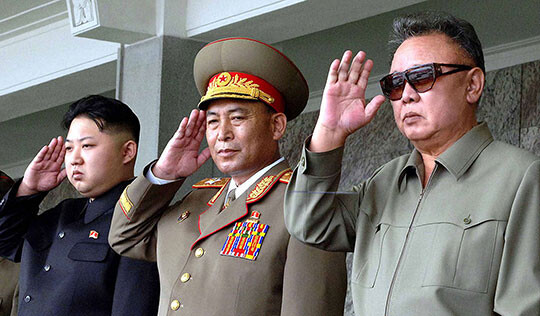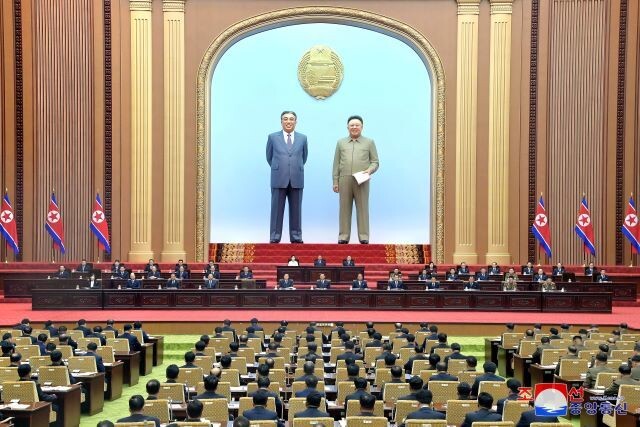Introduction
Next year, the Kim Jong Un regime will celebrate its 10th anniversary. What kind of future does Kim aspire for his regime? This question is of particular interest, as the regime is currently experiencing a triple distress: “comprehensive sanctions against North Korea,” “damage from chronic floods” and the recent “global coronavirus pandemic.” It is seen that the regime capitalizes on "disaster risk reduction” governance to address the triple distress. The regime appears to justify its rule by emphasizing its crisis management capabilities through disaster risk reduction governance. Kim Jong Un, who returned empty-handed after engaging in “a nuclear negotiation” with the U.S. from 2018 to 2019, is now launching a charm offensive to win back the public sentiment and expand communications with the international community through a battle against disasters. North Korea's self-proclaimed "corona-free country" slogan is used as a governance tool to prove the "normality" or even “superiority" of the North Korean regime. Other authoritarian countries such as China and Venezuela have also used this strategy. Due to the collapse of U.S.-DPRK summit, North Korean military hardliners challenged Kim Jong Un, but the transition to the national emergency quarantine system due to COVID-19 last year paradoxically proved to be an opportunity for Kim to strengthen his regime. In other words, by actively advancing the global health security agenda to overcome disasters, Kim Jong Un was able to justify his reign internally and flaunt North Korea’s status as a “normal” state externally. It is noteworthy that the Kim Jong Un regime considers discourse on international development such as the UN’s Sustainable Development Goals (SDGs) for its policy-making and actively seeks ways to improve its domestic institutions and utilize multilateral organizations.
Motivation Behind North Korea’s Focus on Disaster Risk Reduction Governance
There are three main reasons why North Korea is paying attention to disaster risk reduction governance. First, it is for domestic political reasons. In the Kim Jong Un era, “disaster” is being used as a key resource to establish new governance in an effort to put an end to the emergency state of his predecessors in order to stride a leap forward to a modern state. While demand for security is emphasized under the emergency system, the need for safety is prioritized under the normal system. North Korea is going through a vicious cycle of disasters including chronic flood damage, malnutrition, and epidemics. It is essential that it improve its crisis management capabilities through disaster recovery and preventive measures in order to simultaneously prevent public dissent and solidify the Kim Jong Un regime.
Second, disaster risk reduction governance is practical under the current sanctions. Disaster governance is a useful channel through which North Korea can receive legitimate assistance from the outside. The only external resources that North Korea can mobilize under comprehensive sanctions by the United States, Europe, and the UN are humanitarian aid such as food, health/medical care, maternity assistance, and participation in projects linked to the UN’s SDGs. In particular, as COVID-19 spreads around the world, the international community's support for disaster recovery and prevention has become more important than ever as North Korea closed its borders on their own for quarantine and even stopped smuggling with China. In other words, the disaster risk reduction governance strategy of the Kim Jong Un era consisting of disaster prevention, preparedness, response, and recovery is the only arena in which North Korea’s engagement with the global community, particularly multilateral cooperation, is encouraged. It also provides chances for improvement in the inter-Korean relationship.
Third, the disaster risk reduction governance meets North Korea’s need for global recognition. In the Kim Jong Un era, North Korea is spreading the image of a “normal state” externally by actively prioritizing the safety of its people from disasters. Last year, Chairman Kim Jong Un delivered a speech at a military parade to mark the 75th anniversary of the founding of the Workers' Party of North Korea (October 10, 2020). A large part of his message was devoted to expressing his gratitude to the people and the military that were going through three hardships of “harsh, long-lasting sanctions”, “severe natural disasters” and “emergency quarantine due to coronavirus.” Chairman Kim's tears and self-reflective leadership seen during the speech gave a fresh shock to the regime, showing a vivid contrast to the intensifying global trend of authoritarianism emerging amid the global health and security crisis. In addition, at the 8th Party Congress of the Workers' Party of Korea (January 12, 2021) held earlier this year, Kim Jong Un reaffirmed his will to concentrate all efforts on economic construction under the banner of "people first" and "our state first", thereby seemingly contributing to the establishment of legitimacy and stability as a normal state.
Disaster Risk Reduction Governance of North Korea in the Kim Jong Un Era
As such, disasters provided an opportunity for Kim Jong Un to tighten his control of the regime despite domestic and international challenges; it seems that he is taking full advantage. The first indication of his intent to utilize disasters can be found in the current changes in disaster preparedness and recovery policies within North Korea. Since Kim Jong Un came to power, the North Korean media has been reporting foreign news on climate change and disaster issues. Its media outlets have increasingly dedicated a good deal of space to the issue of climate change adaptation and mitigation efforts such as renewable energy and environmental protection. This change of awareness led to the following policy changes.
Coincident to Chairman Kim Jong Un's inauguration, North Korea reorganized the “typhoon forecasting and warning” system (2012) and established the “Bureau for Disaster Management” under the State Planning Commission (2013) to invoke emergency measures at the national level in areas where damage is expected. According to Decree 76 of the Presidium of the Supreme People's Assembly, “the Law on Disaster Prevention, Relief and Recovery (revised in 2017)” was enacted by integrating the existing disaster risk management-related laws. As a result of the enactment of the Law on Disaster Prevention, Relief and Recovery, the standing disaster risk management agency was established on November 30, 2014, and the existing Bureau for Disaster Management and other related agencies under different departments were integrated into the newly established “State Committee for Emergency Disaster Management (SCDEM)”. The Committee, a control tower for the entire process of disaster prevention and recovery, developed a strategy for disaster risk reduction, disaster risk preparedness, primary recovery, and the consolidation of scientific and technological foundations for disaster management. In addition, the development of disaster risk assessment tools and recovery technologies fitting the North Korean situation were promoted as a top priority. The disaster response system was dualized into two categories for higher efficiency - by department (for example, the issue of food security is addressed by the Ministry of Agriculture, Ministry of Forestry, Ministry of Fisheries, and Ministry of Land, Environment and Protection) and by region (response systems under city/county people’s committee). Along with the two categories, the local Red Cross Society also participated under the national disaster response system in cooperation with local governments. In the Kim Jong Un era, North Korea has pursued long-term reconstruction and prevention through institutional reform rather than short-term response or unsubstantial slogans, which is consistent with the current goals of disaster risk reduction governance of the international community.
Another sign indicating that Kim is actively using disaster risk reduction governance as a means of strengthening his regime is found in his active pursuit for multilateral solutions for disaster risk reduction. Kim’s response on August 29-31, 2016 to the flooded area of North Hamgyong Province clearly shows the changes in North Korea’s disaster governance and perception. At that time, Typhoon Lionrock hit hard 6 areas in Hoeryong-si, Yeonsa-gun, Onseong-gun, Gyeongwon-gun, Musan-gun, and Gyeongheung-gun, resulting in 138 people dead, 400 people missing, and 600,000 people displaced. Kim’s administration mobilized its national, social, and people’s capabilities on a new battle called “disaster recovery” just before the 7th Party Congress in 2016 under the names of “Northern Disaster Recovery Front” and “Northern Battlefield.” In this process, he actively requested support from the international community and accepted the international norms of disaster risk management, which was unusual. North Korea did not cover up the damage and aid from the international community like before, but rather actively reported the aid received from the United Nations and the Swiss Development Cooperation Agency. Furthermore, the UN North Korea disaster relief program, which was made by an emergency appeal from the UN resident coordinator in North Korea, was allowed to be implemented within the framework of the second “UN Strategic Framework” (UNSF 2017-2021).
In fact, near the end of the Kim Jong Il regime in 2010, the first United Nations Strategic Framework (UNSF), led by the UN Country Team (UNCT), was established with four strategic priority areas: “Social Development,” “Partnerships for Knowledge and Development Management,” “Nutrition,” and “Climate Change and Environment.” Back then, the UN scaled up its assistance to help the flood-hit North Korea in 2011-2012 but failed to achieve favorable results due to the government's lack of cooperation in allowing UN agencies to work in North Korea for aid distribution and monitoring. The Kim Jong Un regime, on the other hand, has expanded cooperation with the UN and other international organizations despite the international sanctions imposed after the country's consecutive nuclear tests. In 2014, the government showed attempts to revise its disaster risk reduction policies to align with international norms. Under the enhanced disaster risk reduction governance after the enactment and revision of the Law on Disaster Prevention, Relief and Recovery, the government established the “National Disaster Risk Reduction Strategy (2019-2030)” and the “National Environment Protection Strategy (2019-2030),” and launched the “Forest Reforestation Campaign for Implementation of Carbon Emissions Reduction Goal as a Response to Climate Change (2015-2024).” In fall 2015, North Korea presented a draft for a new UNSF for implementing the SDGs. In May 2016 at the 7th Party Congress, the government reflected the SDGs implementation plan into the five-year strategy for national economic development. The second version of the UNSF, completed under the agreement of the National Coordination Committee (NCC) of the Ministry of Foreign Affairs of the DPRK and respective related ministries, emphasized the UN-centered global partnership and coordination system to enhance various activities for the successful implementation of the SDGs and the UN humanitarian assistance system. As a result, in 2016, after the flood damage, the Kim Jong Un regime was able to launch the disaster restoration project in the six key sectors of nutrition and food security, health, maternal and child health, water hygiene, education, and new housing construction in line with the global partnership. And it was guided by the four strategic goals in the new UNSF, which are Food and Nutrition Security, Social Development Services, Resilience and Sustainability, Data and Development Management.
In such disaster risk reduction governance, enhanced multilateral cooperation with the international community played a crucial role in the relief activities at the regional level. According to the Annual Report 2020 of the International Federation of Red Cross and Red Crescent Societies (IFRC), which already highlighted the need for disaster response governance at the local community level in 2010, Community Engagement and Accountability (CEA) was realized in the disaster response and restoration process for Typhoon Lingling damages in 2019 despite the COVID-19 induced border closure and international sanctions. In addition, the IFRC concluded the Early Warning and Early Action Training held in 2015 during a monitoring mission in Yonggwang County on September 23rd, 2019, which was an operation related to the relief work for Typhoon Lingling, was effective in preparing the community for disasters and the people for a course of action once they received the early warning. This mutual interaction with the international community for disaster relief work and the efforts to enhance national disaster governance led to notable progress in disaster risk reduction in North Korea during the Kim Jong Un era. These changes are noticeable in the changed social atmosphere which encourages usual preparedness for the disaster prevention measures at the land management work level in the spring and fall of 2020 and 2021. As the country strives to fulfill its responsibility as a UN member state in the disaster governance sector, North Korea also claims its right to receive technical and financial assistance from the international community for climate change adaptation and mitigation. For example, the country presented a project plan for readiness support to the Green Climate Fund (GCF) in 2019. From such active engagement in the disaster risk reduction sector, it is easy to assume that North Korea will continue to participate in the international community in a way that meets the universal standards, even in areas that go beyond disaster risk reduction.
The country's forward-looking attitude observed in the flood-damage recovery project in 2016 led to a change in the political narrative as well. This disaster recovery experience in the “Northern Front” has been brought up continuously as an example of Kim Jong Un’s people first principle. For instance, on October 8th, around 60 days after the flood, the Rodong Sinmum commentary highlighted Kim Jong Un's “love for the people” through disaster risk management to justify his regime. Such emphasis on the people aligns with the “people first” principle that appeared as the main political factor under the “our state first” motto, distinguishing the regime’s focus from previous one. The “military first” principle in Kim Jong Il regime changed to a stance that unites the military and people with a relatively stronger emphasis on the “people” through diverse people-caring policies such as the disaster recovery project. This is the stark difference between Kim Jong Un and Kim Jong Il. The regime's intentions to gain legitimacy through the national disaster risk reduction efforts by naming it “people first politics,” various efforts to raise awareness, and the government's prompt and direct guidance and management of the early response strategy and practices became more prominent in this aggravated natural disaster emergency situation due to the global spread of COVID-19 in 2020.
During the flood-damage crisis in 2020, the Kim Jong Un regime showed innovative moves in its party meetings, such as holding continued Executive Policy Council of the Central Committee of the WPK meetings in the affected region and endeavoring to establish a local response system. In 2016, the government dispatched the People's Armed Forces and Shock Brigade, initially mobilized for the 200-day battle after the Worker's Party Congress, to regions hit by the Typhoon Lionrock for recovery operation to highlight its pursuit for people-centered socialism. In 2020, the country's supreme leader dispatched through a letter 12,000 people as the "capital party member divisions" consisting of party members in Pyongyang to the flood-hit regions for recovery and reconstruction work, setting disaster recovery as the main target in the “80-day battle,” which was mobilized to prepare for the 8th Party Congress held in January 2021. This proves that Disaster Risk Reduction Governance plays a vital role in the regime's national identity. These changes in domestic politics show that “people first politics” is the real key to prove the legitimacy of Kim Jong Un's succession of power. We could say that Kim Jong Un is now adopting a more evolved version of the previous military-people route, where the people come first, and the military follows after. Such changing relations between the military and the people reflects the Kim Jong Un regime’s new strategic line of ‘all efforts on economic construction’, which was established in April 2018 after North Korea declared its completion of national nuclear force at the end of 2017.
Conclusion
So far, we have discussed North Korea's perception and policy changes on disaster risk reduction governance in the Kim Jong Un era. As the Kim Jong Un regime enters its 10th year next year, it faces a new challenge different from the previous regimes: North Korea itself. Until now, North Korea has routinely engaged in economic activities that deplete the given natural environment. For example, people cut down trees for firewood and devastated mountains and lands for underground mining. As a result, the vulnerable grounds that could not stand the heavy rain led to landslides that caused massive deaths and wiped-out roads that were hard to repair, resulting in increased damage in the isolated regions. The slower the recovery was, the quicker the infectious diseases spread; medication and food shortages caused even more deaths. This vicious cycle of disasters occurs each year and is nothing new to North Korea.
However, as described earlier, the country's political rhetoric started to change since Kim Jong Un came to power. It goes beyond simply highlighting the importance of water and air to actively introducing the concept of the UN's Sustainable Development Goals and reflecting it into its policies. This has significant implications on policies towards North Korea. At a time when disaster is starting to be recognized as a national security issue, it is worth noticing that Disaster Risk Reduction Governance has emerged as North Korea’s political rhetoric to overcome the country's state of emergency caused by floods, epidemics, and sanctions. In particular, disasters, as perilous as a wartime situation, provided a reasonable pretext for North Korea’s effective mobilization of internal and external resources despite international sanctions to achieve the regime's goal of becoming a “normal state.” In the process, the “people first” policy emerged as an important governing principle, replacing the “military first” policy from the previous era. The regime has shifted the economic focus from military-centered heavy industry to the civilian-centered light industry and has hastened the improvement of housing and the water and sewage system, showing new political aspects.
It seems like North Korea is creating communication channels with the international community under the universal goal of disaster risk reduction. This could be a good place to start seeking ways to bring the Kim Jong Un regime out of isolation and seclusion. It also provides North Korea a shortcut to being accepted as a full-fledged member of the international community by fulfilling its responsibilities and claiming its rights under the universal norms of the SDGs. As “disaster” becomes an essential topic in North Korea's political rhetoric, the international community needs an in-depth discussion on how it will affect the Kim Jong Un regime and peacebuilding on the Korean Peninsula.■
■ EJR CHO (Eunjeong CHO) is Research Fellow at the Institute for National Security Strategy (INSS), Seoul. Cho is a scholar who attempts to critically engage with the mainstream discussion of International Relations and published many scholarly articles and policy papers including ‘Non-Proliferation Efforts at Risk: A Study of North Korea’s Network for Nuclear and Missile Cooperation’(National Strategy, 2014), ‘Nation Branding for Survival in North Korea: The Arirang Festival and Nuclear Weapons Tests’ (Geopolitics, 2017), and ‘Epistemological Turn in North Korean Studies: Critical Analysis of North Korean Threat Theory’ (North Korea and International Relations, 2018). Currently, Cho is working on the issue of geopolitical implications of European countries’ Indo-Pacific Strategy.
■ Tae-Kyung KIM is Associate Research Fellow at the National Assembly Futures Institute, South Korea. Her research interests include inter-Korean relations, North Korean politics and culture, and Cold War studies in Northeast Asia. She holds a Ph.D. in Political Science from Seoul National University.
■ Typeset by Seung Yeon Lee | Research Associate
For inquiries: 02 2277 1683 (ext. 205) | slee@eai.or.kr
